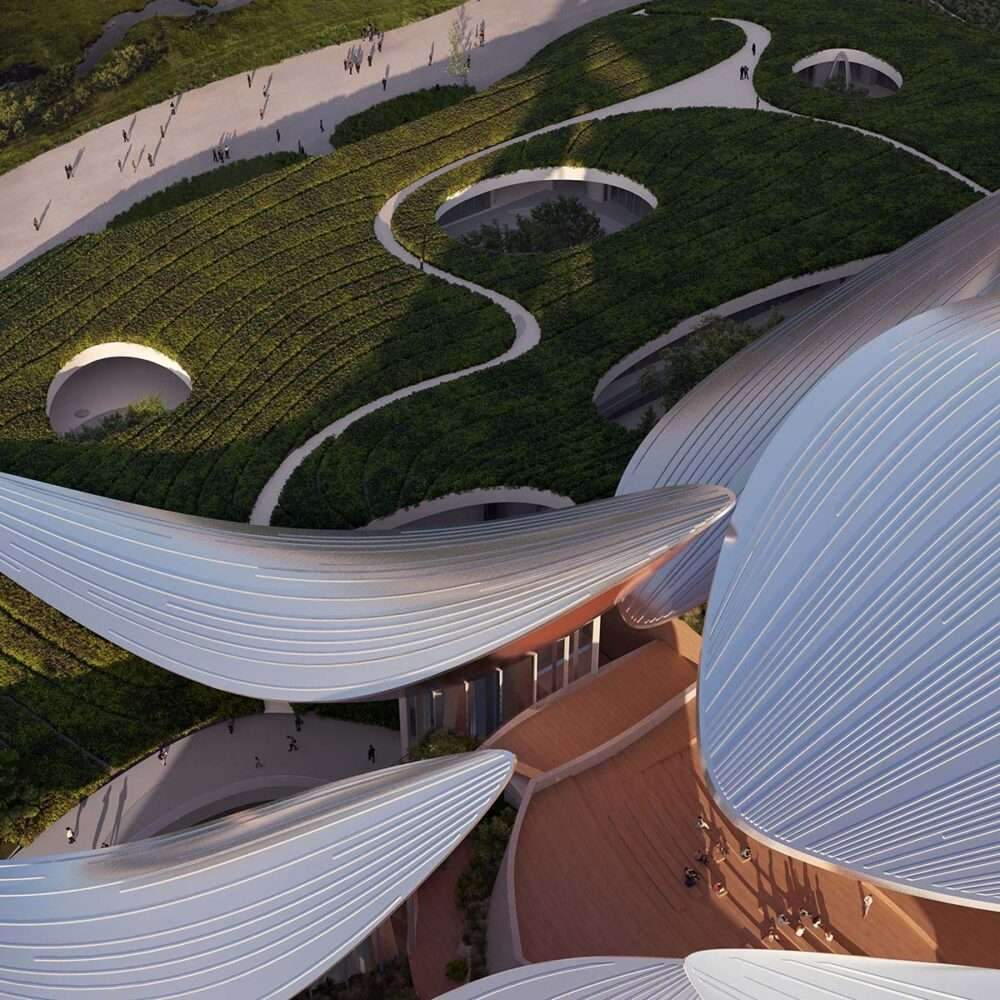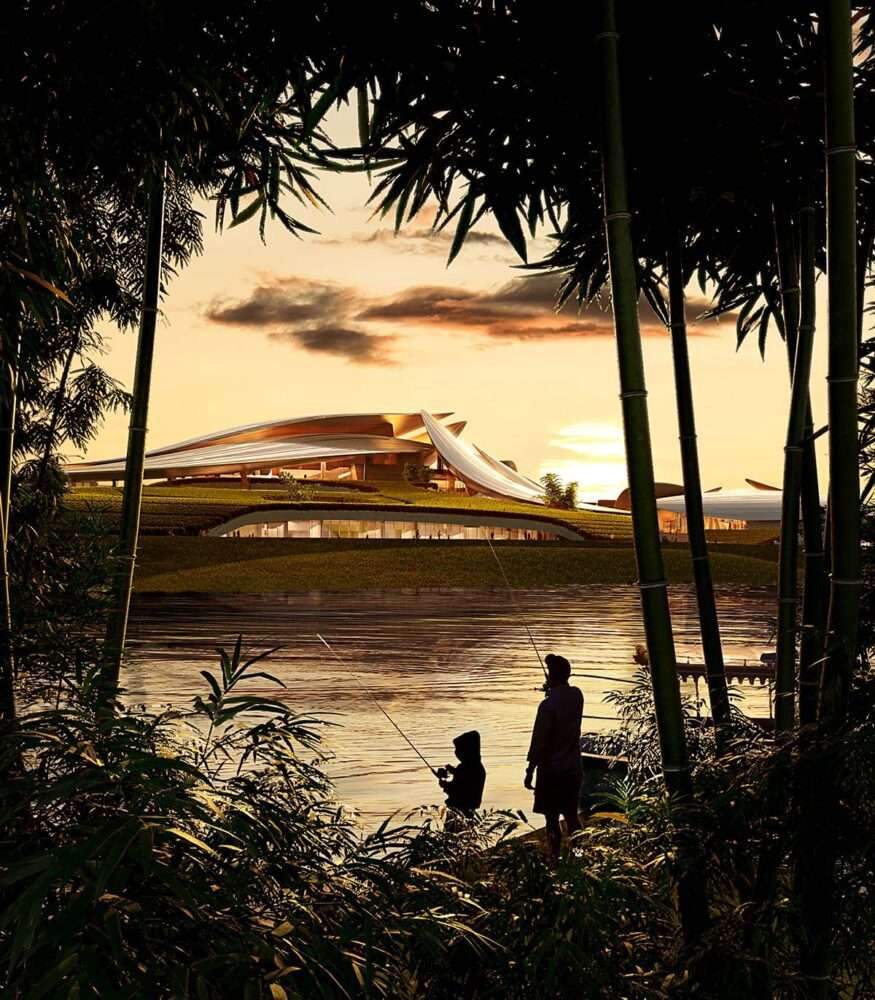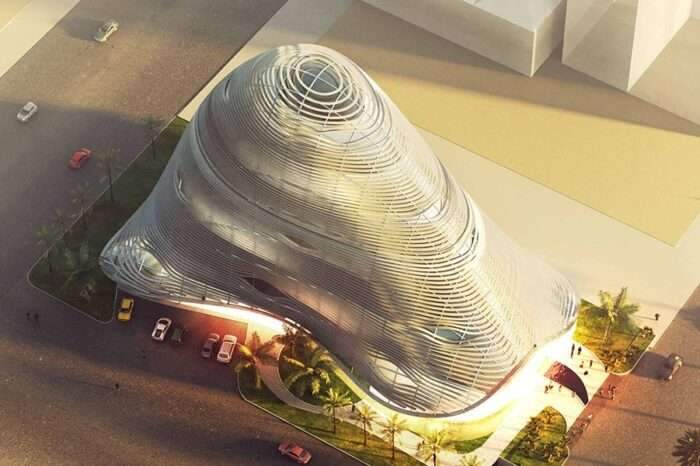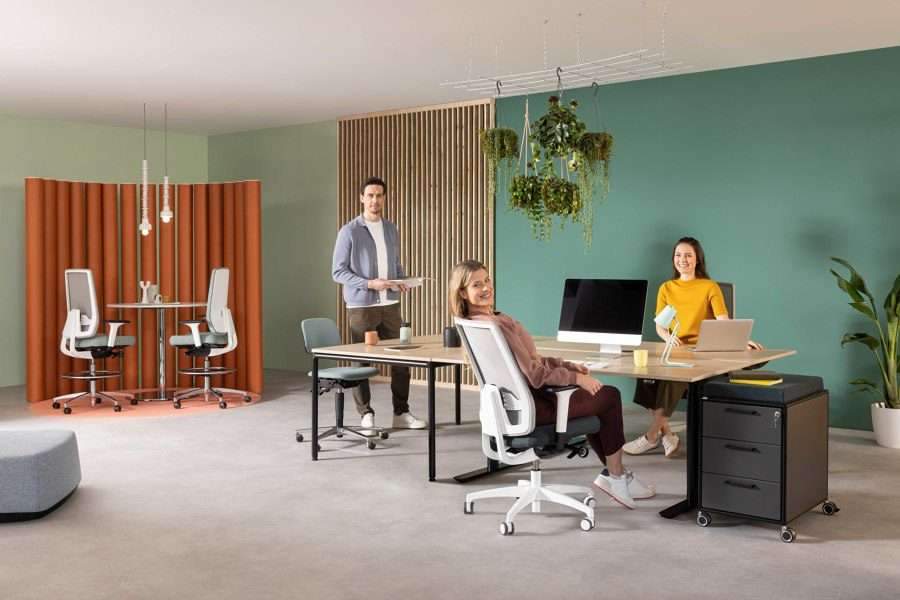MAD Architects has unveiled the design for a new culture and arts center hidden beneath white metal roofs scattered like “bamboo leaves” in Anji, China.
The project, called the Anji Center for Culture and Arts, will consist of
With an area of 120 thousand square meters, it consists of six main areas: A
For the grand theatre, conference Centre, entertainment Centre, sports Centre,
youth activities Centre, and technical education Centre.
Places spread under the roof of “bamboo leaves” surrounding Anji’s unique green tea fields.

The project, with an area of about 149 thousand square meters,
is located in Zhejiang Province in southeastern China, near Shanghai.
Led by MAD Founder and Director, Ma Yansong, MAD said:
“Anji is the only province to have won the UN Habitat Award and has been praised as China’s ‘bamboo’ and ‘white tea’ city” .
The project is designed to serve as a transitional linking space between the natural and architectural environments in the region.
On its eastern side lies the city, while the river and mountains lie in the distance on its western side.

“We seek the unique aura of this area and integrate it into daily life,” Ma Yansong said.
The project is designed as a porous meeting space,
and will be accessible to the public from all directions and at all times of the day.
Design features
It is arranged along the axis of the optical corridor on both sides to allow for a central corridor,
It will become an open outdoor platform where visitors can enjoy framed views of the mountains and sky above.
The six spaces are distributed under the white-tiled ceiling, providing an undulating silhouette.
To achieve this wavy silhouette, MAD was inspired by the shape of the surrounding hill planted with Anji white tea.

The complex has multiple courtyards across the site that act as programmatic interstices that dissolve the boundaries between interior and exterior space.
On the western side of the project, a large theater will be used as an outdoor venue for performances,
concerts and exhibitions.
The main feature of the Anji Culture and Arts Center consists of a series of overlapping metal surfaces,
Which resemble “scattered bamboo leaves” with hills adding visual complexity to the picturesque landscape.
“The gaps between them allow natural light to enter the interior,” MAD explained.
While the main façade is highly transparent to additionally attract natural light through its side elevations.”

The main façade is 17 meters high and will be “the tallest self-supporting glass wall in China when completed,” according to the studio.
Following the same complexity indoors, the main interior space of the Grand Theater and Conference Center is a two- to three-storey layout,
While the other four places are a first floor plus a partial layout for the second floor.
The building will include a hall with a capacity of 1,300 seats for the Grand Theater,
and a main hall with capacity for 2,000 seats for the conference center designated for events and meetings.

To provide an energy-efficient building and improve energy use, the project will include roof greening,
The permeable pavement, comfortable green spaces, and benefiting from rainwater resources.
For more architectural news






